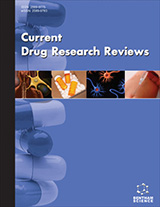
Abstract
Background: Despite the implementation of various cancer therapies, adequate therapeutic efficacy has not been achieved. A growing number of studies have been dedicated to the discovery of new molecules to combat refractory cancer cells efficiently. Recently, the use of a rare type of sugar, D-allose, has attracted the attention of research communities. In combination with the first-line treatment of cancers, including different types of radiotherapies and chemotherapies, D-allose has been detected with favorable complementary effects.
Understanding the mechanism of therapeutic target molecules will enable us to develop new strategies for cancer patients that do not currently respond to the present therapies.
Objective: We aimed to provide a review of the effects of D-allose in cancer treatment, its mechanisms of action, and gaps in this field that require more investigations.
Discussion: With rare exceptions, in many cancer types, including head and neck, lung, liver, bladder, blood, and breast, D-allose consistently has exhibited anticancer activity in vitro and/or in vivo. Most of the D-allose functions are mediated through thioredoxin-interacting protein molecules. D-allose exerts its effects via reactive oxygen species regulation, cell cycle arrest, metabolic reprogramming, autophagy, apoptosis induction, and sensitizing tumors to radiotherapy and chemotherapy.
Conclusion: D-allose has shown great promise for combating tumor cells with no side effects, especially in combination with first-line drugs; however, its potential for cancer therapy has not been comprehensively investigated in vitro or in vivo.
Graphical Abstract
[http://dx.doi.org/10.2174/1874467209666160112125631] [PMID: 26758947]
[http://dx.doi.org/10.1016/j.drup.2019.100658] [PMID: 31678863]
[http://dx.doi.org/10.1016/j.jtho.2019.12.099]
[http://dx.doi.org/10.1111/jcmm.17259] [PMID: 35224849]
[PMID: 35463822]
[http://dx.doi.org/10.3892/or.2022.8328] [PMID: 35543153]
[http://dx.doi.org/10.1271/bbb.100121] [PMID: 20622432]
[http://dx.doi.org/10.1016/0008-6215(94)00148-0]
[http://dx.doi.org/10.1002/hlca.200390083]
[http://dx.doi.org/10.1016/j.enzmictec.2005.08.014]
[http://dx.doi.org/10.3177/jnsv.48.77] [PMID: 12026195]
[http://dx.doi.org/10.1080/09168451.2016.1146069] [PMID: 27022778]
[http://dx.doi.org/10.1007/s00253-011-3370-8] [PMID: 21655980]
[http://dx.doi.org/10.3762/bjoc.9.281] [PMID: 24367410]
[http://dx.doi.org/10.1200/JCO.2014.57.3535] [PMID: 25287827]
[http://dx.doi.org/10.18632/oncotarget.12767] [PMID: 27768598]
[http://dx.doi.org/10.1080/07391102.2018.1424035] [PMID: 29301458]
[http://dx.doi.org/10.1007/s11224-020-01595-9]
[http://dx.doi.org/10.1371/journal.pone.0057692] [PMID: 23520479]
[http://dx.doi.org/10.1016/j.canlet.2011.02.032] [PMID: 21439723]
[http://dx.doi.org/10.3892/ijo.2014.2590] [PMID: 25109398]
[http://dx.doi.org/10.3892/ol.2018.7787] [PMID: 29456721]
[http://dx.doi.org/10.3892/or.2018.6192] [PMID: 29328484]
[http://dx.doi.org/10.1016/j.mito.2013.01.008] [PMID: 23376030]
[http://dx.doi.org/10.1159/000485089] [PMID: 29145191]
[http://dx.doi.org/10.1038/sj.onc.1206663] [PMID: 12947383]
[http://dx.doi.org/10.1002/jcp.10119] [PMID: 12115731]
[http://dx.doi.org/10.1038/nrd2803] [PMID: 19478820]
[http://dx.doi.org/10.1038/nrc3803] [PMID: 25342630]
[http://dx.doi.org/10.1016/j.ccell.2014.11.019] [PMID: 25620030]
[http://dx.doi.org/10.1172/JCI85339] [PMID: 27135880]
[http://dx.doi.org/10.1158/0008-5472.CAN-16-0987] [PMID: 28011619]
[http://dx.doi.org/10.1024/0300-9831/a000517] [PMID: 30806585]
[http://dx.doi.org/10.1097/01.hjh.0000182523.29193.e3] [PMID: 16148613]
[http://dx.doi.org/10.1016/j.toxlet.2007.06.015] [PMID: 17698303]
[http://dx.doi.org/10.1016/j.neulet.2010.10.004] [PMID: 20937361]
[http://dx.doi.org/10.1096/fasebj.7.2.8440412] [PMID: 8440412]
[http://dx.doi.org/10.1038/sj.onc.1201310] [PMID: 9333022]
[http://dx.doi.org/10.1016/S0891-5849(97)00291-8] [PMID: 9559871]
[http://dx.doi.org/10.2174/1568009043481641] [PMID: 14965267]
[http://dx.doi.org/10.3892/ijmm.13.6.883] [PMID: 15138630]
[http://dx.doi.org/10.1146/annurev.bi.54.070185.001321] [PMID: 3896121]
[http://dx.doi.org/10.1093/emboj/17.9.2596] [PMID: 9564042]
[http://dx.doi.org/10.1038/sj.onc.1209394] [PMID: 16607285]
[PMID: 1719091]
[http://dx.doi.org/10.1016/j.yexcr.2007.01.004] [PMID: 17316609]
[http://dx.doi.org/10.1016/0167-4781(94)90242-9] [PMID: 8086474]
[http://dx.doi.org/10.1074/jbc.274.31.21645] [PMID: 10419473]
[http://dx.doi.org/10.4049/jimmunol.164.12.6287] [PMID: 10843682]
[http://dx.doi.org/10.1089/ars.2000.2.1-83] [PMID: 11232604]
[http://dx.doi.org/10.1016/S0378-1119(01)00455-3] [PMID: 11376942]
[http://dx.doi.org/10.1074/jbc.M600427200] [PMID: 16766796]
[http://dx.doi.org/10.1074/jbc.M112.419101] [PMID: 23329835]
[http://dx.doi.org/10.1016/j.immuni.2004.12.012] [PMID: 15723808]
[http://dx.doi.org/10.1073/pnas.1715930115] [PMID: 29339473]
[http://dx.doi.org/10.1038/sj.onc.1206610] [PMID: 12821938]
[http://dx.doi.org/10.1016/j.bbrc.2005.08.161] [PMID: 16143294]
[http://dx.doi.org/10.3892/ol.2017.6397] [PMID: 28781647]
[PMID: 12543799]
[http://dx.doi.org/10.1359/jbmr.040913] [PMID: 15537450]
[http://dx.doi.org/10.1210/en.2004-1378] [PMID: 15705778]
[http://dx.doi.org/10.1016/S0076-6879(10)74005-2] [PMID: 20609905]
[http://dx.doi.org/10.1016/j.biocel.2011.09.005] [PMID: 21964212]
[http://dx.doi.org/10.1016/j.jbiosc.2008.12.021] [PMID: 19393559]
[http://dx.doi.org/10.1177/000348941011900810] [PMID: 20860283]
[http://dx.doi.org/10.1002/hed.21070] [PMID: 19340872]
[http://dx.doi.org/10.3390/ijms23126771] [PMID: 35743212]
[http://dx.doi.org/10.1620/tjem.238.131] [PMID: 26829886]
[http://dx.doi.org/10.1128/jb.179.24.7631-7637.1997] [PMID: 9401019]
[http://dx.doi.org/10.1042/bj1310083] [PMID: 4578852]
[http://dx.doi.org/10.1074/jbc.M111.275503] [PMID: 21908621]
[http://dx.doi.org/10.1016/0167-4889(96)00010-9] [PMID: 8679719]
[http://dx.doi.org/10.1016/S0005-2736(96)00217-9] [PMID: 9059504]
[http://dx.doi.org/10.3390/ijms20133374] [PMID: 31324056]
[http://dx.doi.org/10.1073/pnas.0712199105] [PMID: 18458340]
[http://dx.doi.org/10.1016/j.molcel.2013.01.035] [PMID: 23453806]
[PMID: 9563491]
[http://dx.doi.org/10.1038/18230] [PMID: 10086358]
[http://dx.doi.org/10.1182/blood.V95.2.619] [PMID: 10627471]
[http://dx.doi.org/10.1158/0008-5472.CAN-04-2271] [PMID: 15930262]
[http://dx.doi.org/10.1038/sj.onc.1207220] [PMID: 14647411]
[http://dx.doi.org/10.3892/ijo.32.2.377] [PMID: 18202760]
[http://dx.doi.org/10.1620/tjem.228.215] [PMID: 23064522]
[http://dx.doi.org/10.1080/09168451.2014.882747] [PMID: 25036670]
[http://dx.doi.org/10.1039/C8MD00632F] [PMID: 31191866]
[http://dx.doi.org/10.1016/j.intimp.2018.05.017] [PMID: 29906742]
[http://dx.doi.org/10.1016/j.jbiosc.2011.08.005] [PMID: 21889400]
[http://dx.doi.org/10.1016/j.brainresbull.2014.10.005] [PMID: 25445611]
[http://dx.doi.org/10.1186/s13046-015-0147-4] [PMID: 25888489]
[http://dx.doi.org/10.1038/nature10144] [PMID: 21593862]
[http://dx.doi.org/10.1263/jbb.106.248] [PMID: 18930000]
[http://dx.doi.org/10.1016/j.carres.2019.107859] [PMID: 31751780]
[http://dx.doi.org/10.1073/pnas.1216348110] [PMID: 23188799]
[http://dx.doi.org/10.1016/S1389-1723(04)70173-5] [PMID: 16233597]
[http://dx.doi.org/10.3389/fonc.2020.568574] [PMID: 33194655]
[http://dx.doi.org/10.18632/aging.102760] [PMID: 32023548]
























